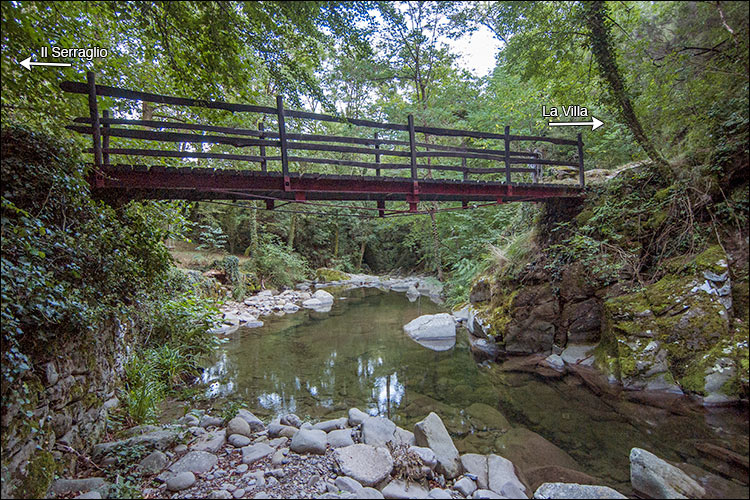Trekking tra i borghi del territorio di Faltona
Natura, storia, ampi panorami, corsi d’acqua stupenti e il percorso per Santa Trinita
Italiano
IN VISITA AL TERRITORIO DI FALTONA – TALLA 15
Il Torrente Bonano e la passarella che oggi consente di attraversarlo dopo che il ponte medievale crollò con l'alluvione del 1966. L'antica struttura si trovava una trentina di metri a monte della passarella. In questa foto vediamo, a sinistra, un muro. Fa parte del grosso lavoro di arginatura che in questo tratto il torrente era stato dotato. La foto è scattata in un momento estivo quando il torrente ha poca acqua. Di norma, però, ne ha molta di più e nei momenti di piena è molto impetuoso. Poche decine di metri più avanti, a sinistra, c'era l'antico molino (c'è ancora), una struttura preziosa che svolgeva un lavoro importante ed economicamente ricco, motivo per cui doveva essere ben salvaguardata.
In antichità costruire un ponte come quello che si trovava in questo tratto del torrente non era lavoro da poco. La realizzazione di queste strutture era giustificata dalla presenza di attività economiche importanti che nella maggior parte dei casi erano i molini.
The Bonano Torrent and the footbridge that today allows you to cross it after the medieval bridge collapsed with the flood of 1966. The ancient structure was located about thirty meters upstream from the footbridge. In this photo we see, on the left, a wall. It is part of the major embankment work that the stream had been equipped with in this section. The photo was taken in a summer moment when the stream has little water. As a rule, however, it has much more and in times of flood it is very impetuous. A few tens of meters further on, on the left, there was the ancient mill (it still exists), a precious structure that carried out important and economically rich work, which is why it had to be well safeguarded.
In ancient times, building a bridge like the one found in this stretch of the stream was no small task. The construction of these structures was justified by the presence of important economic activities which in most cases were mills.






































































































